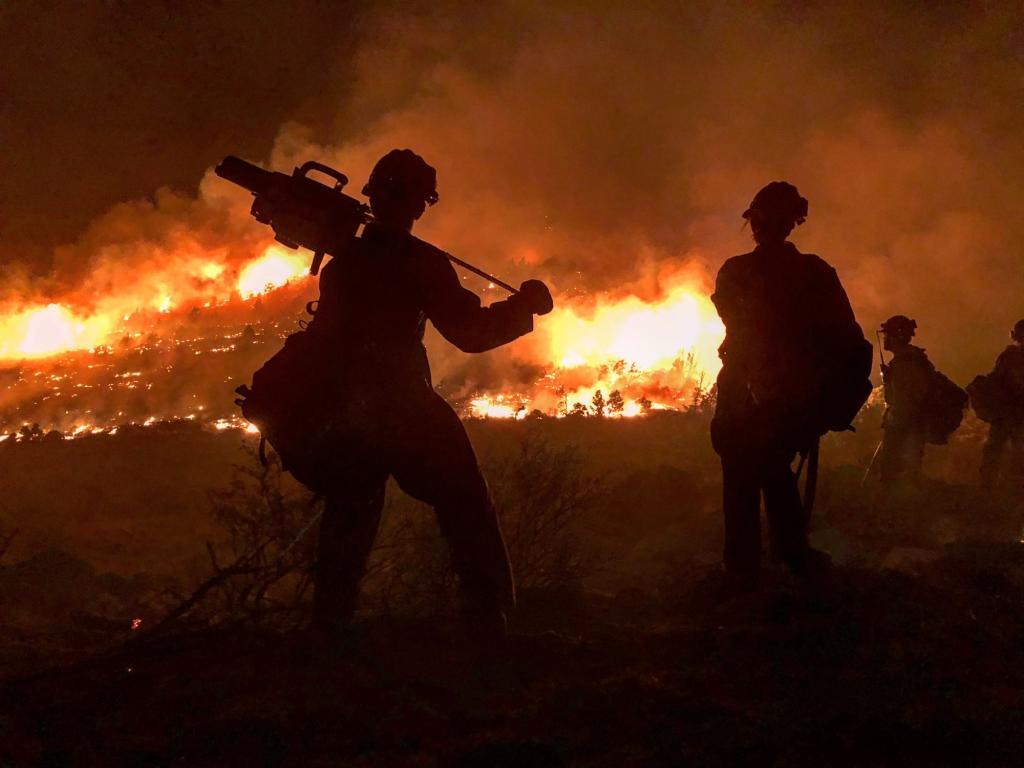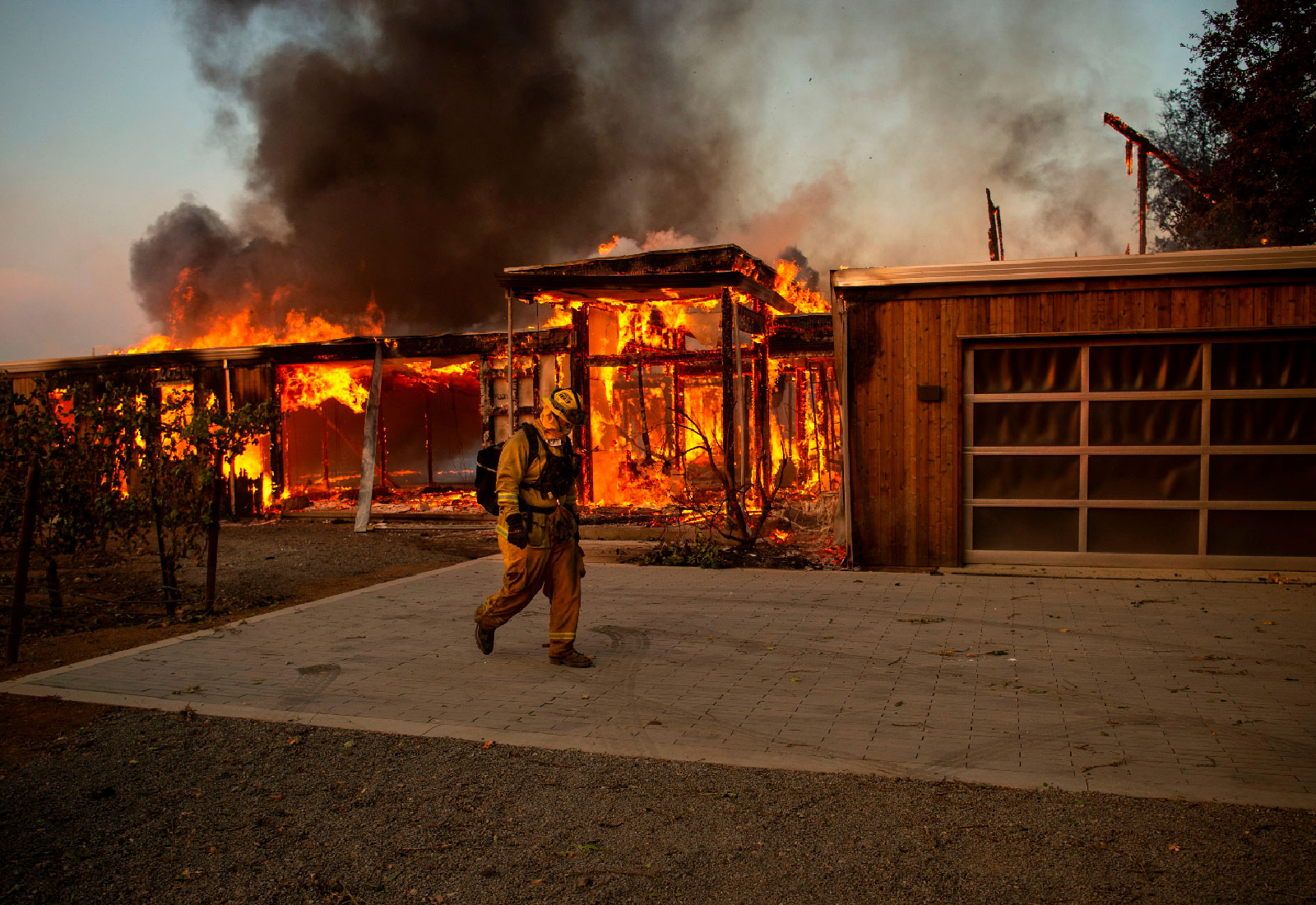The West Coast housing market is metaphorically on fire — with rotting shacks selling for millions. Decades of policies to restrict housing in desirable neighborhoods has pushed prices up — and it has also pushed houses out into more rural, forested areas. As a result, West Coast housing is periodically on fire in the literal sense as well.
A report released Thursday by a group of scholars from the University of California, Berkeley’s Center for Community Innovation and the nonprofit think tank, Next 10, found that wildfire now threatens the lives and homes of more than a quarter of California’s population, largely due to current housing policies that often make it cheaper to construct homes in at-risk areas.
It’s hard to build in California cities because every new home must pass through a permitting odyssey, facing local reviews and the threat of lawsuits from neighbors. As a result, the report found, in recent decades, one in every two new homes built in California was out at the edge of wildlands, down winding roads, or shaded by towering pines. In other words, current policies are pushing half of all new housing into the path of wildfires.
This new housing — everything from inexpensive manufactured homes to mansions perched on hilltops — is always cheaper than the same type of house in a city. As a result, many people seeking more affordable housing have moved into wildfire hazard areas.
“The wildfire issue is intimately coupled with the issue of California’s enormous housing problem,” Robert Olshansky, a lead author of the new report and Professor Emeritus at the University of Illinois, Urbana-Champaign, told Grist. “There’s pressure to build more housing, there’s resistance to putting it in the middle of towns, and there’s less resistance to putting it out on the edges, so that’s where they put it.”
Kelly McKenzie is one of the people who moved into California’s forests in 2018 in search of less expensive housing. The $729,000 her family paid for a house in the foothills of the Sierra Nevada wouldn’t seem affordable in most parts of the country, but it was much cheaper than anything they could have bought in San Francisco, where they lived before. But as fires ripped through the region, her insurance company informed her that the home had become too risky for them, which left McKenzie’s family paying some $5,000 a year to be part of a high-risk insurance pool — much more than they had ever anticipated paying.
“We can afford to pay for it, but it annoys me greatly,” she sighed. “And I know that other people with less money face really difficult decisions.”
Wildfire is exacerbating the housing crisis, and the poorest residents feel the pinch most.
“More and more people are only able to afford housing in high-risk places,” said Katelyn Roedner Sutter, a climate expert for the Environmental Defense Fund and a member of an insurance reform committee organized by California’s Insurance Commissioner. “But housing is not affordable when you can’t afford to insure it.”
The fix seems simple: The report suggests that California should make it easier to build inside cities, while making it harder to build in hazardous wildfire areas. So far, the politics of making such a fix have proven to be complicated. In 2019, California Governor Gavin Newsom vetoed a bill that would have made it harder to build in the most dangerous fire zones, because he worried it would worsen the housing crisis. And many cities have campaigned fiercely against measures that would force them to allow developers to build new homes within their borders.
Still, the wildfires have proven to be such a massive ongoing disaster that lawmakers have no choice but to connect the dots between wildfires in the foothills and zoning ordinances restricting the number of apartment buildings in cities. “There are just so many bills in front of the California legislature now that recognize that all these things are related to each other,” Olshansky said. “Three years ago this wasn’t happening. I sense the political winds — the hot dry political winds, maybe we can say — have changed.”
Last Friday, for example, a working group organized by California Insurance Commissioner Ricardo Lara, released a set of proposals to cope with climate risks, including policies that could stop new construction in the most hazardous areas. There’s a clear need to update insurance practices to reflect the reality of climate change. For most of the last half century, the report notes, the insurance industry paid out an average of $100 million per year in fire insurance claims in California. From 2011 to 2018, however, that figure jumped forty-fold to $4 billion per year — due to more intense fires.
Another solution suggested by the report, would be for fire-prone communities and nonprofits to buy up vulnerable residential areas and turn them into soccer fields, wetland habitat, or some other form of parkland that would serve as a fire break. At first, that seemed impossible to Olshansky: “When I first heard this I thought, that’s the kind of crazy idea that we come up with at a university but it can’t happen in real life,” he admitted. But the strategy is actually under consideration in the town of Paradise, which burned to the ground in 2018, where local government has a plan to buy lots where houses once stood and create exactly this sort of irrigated parkland buffer.
Put into practice, a mix of these policies would spur building in cities, while creating the possibility of retreat from the most dangerous wildfire areas. It’s not a relocation program Olshansky said, more of a persistent nudge for the coming scores of people likely to lose their homes to fire: “At the moment they get burned, while we are showing compassion and trying to help them rebuild, we should provide them with opportunities to relocate to safer places where they won’t be traumatized by these fires anymore,” he said.



